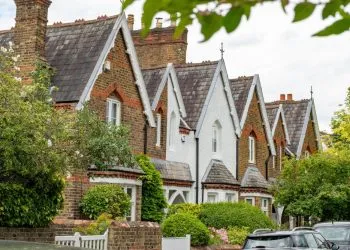Looking for some help onto the property ladder? Here's our rundown of the first-time buyer schemes available from the government
 Almost everybody needs a bit of help, these days, to get onto the property ladder. Whether it’s financial boost from a parent or grandparent or hooking up with a friend or family member to obtain a joint mortgage.
Almost everybody needs a bit of help, these days, to get onto the property ladder. Whether it’s financial boost from a parent or grandparent or hooking up with a friend or family member to obtain a joint mortgage.
But not everyone has the Bank of Mum and Dad at their disposal and for many others, even if they are making a joint application and have parental support, the growth in house prices over the last few years will mean deposits are not stretching very far and affordability is a problem.
And this is where a government scheme could come in very handy. There are several with which you may be acquainted – Help to Buy is one of the more well known but this is now closed for applications before it officially closes on in March 2023.
But the good news is there are several other schemes available – and there should be at least one to suit your circumstances.
We are about to go through each of these and explain a bit about what they do, how they work and who they might be suitable for.
Take a look… there may be a scheme which could transform your homeownership dreams into reality.
Lifetime ISA
If you only choose one scheme – choose this one. If you are below the age of 40 or 18 and over then you are eligible. There’s literally nothing to lose and everything to gain from this gem.
So, here’s the deal. A Lifetime ISA is a savings plan. It was created to provide a way for people to either save for their first home or their pension.
The idea is you put the savings towards your home into this account and not only does it come within an ISA wrapper – which means no tax is paid on the interest – but the government will pay you 25% of whatever you have saved up to £4,000 a year.
 Yes, that’s correct. The government gives you money.
Yes, that’s correct. The government gives you money.
So, if you have saved £4k the government will give you £1k. That’s £5k of savings in total, plus whatever interest you have earned. Even if you only managed to squirrel away £1,000 in a year, you will still get £250.
It’s a no brainer. And, in fact, mortgage expert Jeni Browne, of Mortgages for Business, described it as a ‘great option’ for building your deposit.
You can find out more information about the Lifetime ISA (LISA) here. For more advice and tips on deposit saving see this article.
Pros: An efficient and effective way to save money for your deposit. Once opened you can keep saving until you are 50.
Cons: You must be under 40 to open an account, which – considering the average age of the first-time buyer is rising all the time – can restrict some would-be homeowners.
There are only a few providers offering an LISA – see the full list here – as a cash account. You can save into a stocks and shares LISA but this is dependent on the success of the investments to which it is linked and therefore could prove risky. If you opt for this route it’s recommended you speak to a financial adviser first.
Shared Ownership
Shared ownership – where the buyer purchases a proportion of a home and rents the rest – has been around for over 40 years and looks set to stay (fingers crossed).
Despite its longevity, like the Lifetime ISA, it’s often overlooked. Many people believe, mistakenly, it’s for keyworkers only or that they will not be eligible.
But, in fact, it’s more accessible than you think. Indeed, providing your household income is £80k or less per year (£90k in London) and you can afford the mortgage and rent, you should tick the financial boxes.
 The first hurdle is to find a housing association with shared ownership properties and then you can look at what’s on offer.
The first hurdle is to find a housing association with shared ownership properties and then you can look at what’s on offer.
You can purchase anything from 25% of the property (10% in some cases) initially, and then – once you have settled in – you can progress to own more of the flat or house using a process called ‘staircasing’ where you gradually increase the percentage you own.
You’ll pay rent to the housing association on the remaining part of the property, which you do not own. The more of the property you purchase, through staircasing, the less rent you will pay.
There are specialist shared ownership mortgages to help you purchase your home. The best way to access these and find out what’s on offer is through a broker which has access to the whole of the market.
Click here to find out how to apply for a shared ownership scheme.
Pros: Shared ownership offers a practical and accessible first step onto the property ladder because it means you’ll need to find less money to put down as a deposit.
Some people find they can afford a bigger property or a home in a more attractive area because the cost is reduced. For example a flat worth £240k would require a £24k deposit in order to qualify for a mortgage. But under shared ownership, someone purchasing a 50% share, would only need a £12k deposit to buy £120k of home.
Cons: You will have a smaller pool of homes from which to search as you will be limited to housing association properties.
Similarly, you will also need a specialist mortgage for shared ownership properties. And don’t forget to factor all the fees into your accounts – solicitors, moving costs, mortgage fees etc.
First Homes
It is accepted by many first-time buyers that to afford a home, they may need to relocate to a different area – away from the community in which they have be raised, live or in which they work.
First Homes was created as a potential antidote to this problem.
Unveiled in summer 2021, First Homes offers first-time buyers in England a discount – of at least 30% and up to 50% – on new build homes in their local area.
The way the scheme works and who is eligible is at the discretion of the local authority in each area – but most will prioritise essential workers and residents.
 In the first instance, interested applicants should contact local building developers which are part of scheme and then investigate whether they are eligible. You many also be able to find out more through estate agents.
In the first instance, interested applicants should contact local building developers which are part of scheme and then investigate whether they are eligible. You many also be able to find out more through estate agents.
There are specialist mortgages available for these schemes – Nationwide, Leeds and Newcastle building societies have already come on board as lenders.
You can find out more about First Homes here.
Pros: First Homes offers a route to homeownership for essential workers who want to remain living in their community. With the discount applied, affordability will be less of a hurdle.
Cons: There are a number of barriers to eligibility at the moment, not least the fact it is limited to certain areas where there are developers which are signed up to First Homes. You will also need to meet the criteria set by your local council.
95% mortgage guarantee scheme
A 95% mortgage may seem almost mythical – you’ve heard of them, but in reality gaining approval for a deal which requires only a 5% deposit is easier said than done.
During the pandemic, 95% loan-to-value (LTV) mortgages were pulled from the market leaving many small deposit buyers in the lurch.
To remedy this, the government introduced the 95% mortgage guarantee scheme. As it’s name suggests, the government provides the guarantee for the mortgage, thus taking away some of the risk from the lender.
 High streets lenders such as Barclays, Santander, Nat West and Virgin Money are among those offering deals through the scheme.
High streets lenders such as Barclays, Santander, Nat West and Virgin Money are among those offering deals through the scheme.
Pros: The introduction of the 95% guarantee initiative helped to boost the number of 95% deals on the market, meaning there’s now more choice.
Cons: With house prices so high, it can be difficult for many first-time buyers to afford such a high loan, even with the guarantee.
If you are thinking about taking out one of the deals, remember there are a number of 95% deals out there which are not part of the scheme and which may pose better value for your circumstances. Speak to a broker as they will have access to all the 95% deals on the market and you may well get a better price or terms.















All very interesting … but we’re still trying to find a way to get around our personal situation.
We own a 4-bedroom SD property nearby which was let via an ASTA to our daughter’s divorced / ex-husband.
In 2018-19 he suffered stroke: his employers were good enough to keep him employed, however he was made redundant last year. Our daughter (a Care Worker) moved in with him to assist and pay towards the rent and other costs. He now only receives Universal Credit.
However … her income isn’t very high; and we’re not supposed to rent to our daughter unless it’s via a Regulated Mortgage, which is proving very difficult.
So … what next!